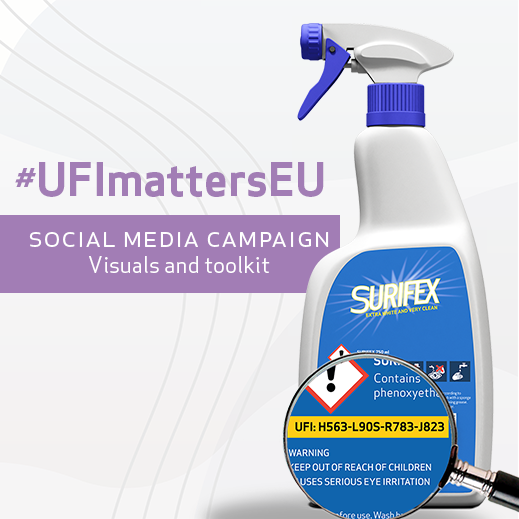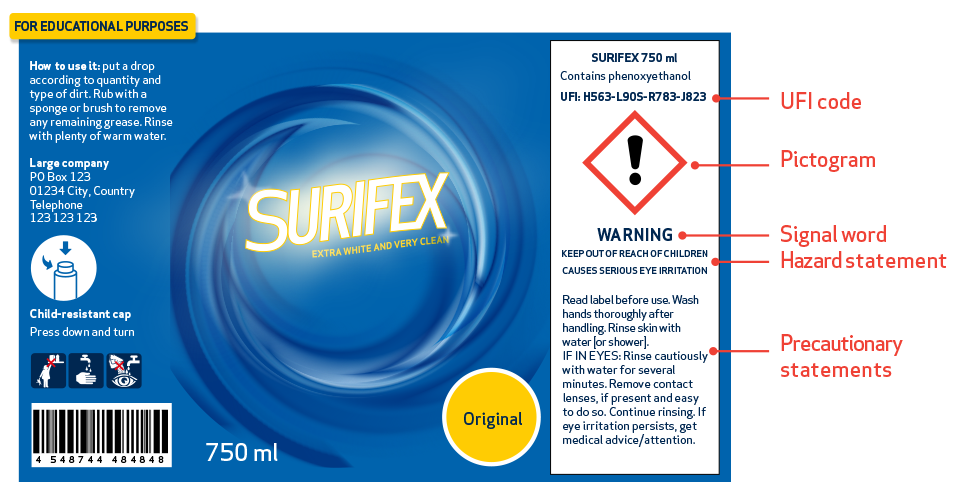Which products have a UFI code?
The UFI code is found on products that are classified for health or physical hazards under the EU’s Regulation on Classification, Labelling and Packaging. Classified products are those which display a pictogram and they may be harmful to your health if not used correctly.
Examples of the types of products you can expect to see a UFI code include:
- Adhesives such as common glue sticks or more specialised adhesives for wall coverings or flooring;
- Air care products from room deodorisers to scented candles;
- Art and craft supplies including finger or hobby paints;
- Cleaning and maintenance products both for indoor areas, such as the kitchen or bathroom, and for outside areas like terraces or stone pathways.
- Specialised cleaning products including those meant for cleaning cars or footwear;
- Detergents for washing laundry, washing machine or dishwasher care agents, as well as fabric softeners;
- Mixtures for electronic cigarettes;
- Garden chemicals such as plant fertilisers and pesticides;
- Home construction products like concrete and mortar;
- Paints and coatings;
- Fuels such as grill lighter fluids and lamp fuels; and
- Inks and toners for printers.
If you cannot find the UFI code, this may be because companies have until the beginning of 2025 to add it to labels if their product was already on the market before 2021.
You will also not find the UFI code, for example, on labels for cosmetics like hair dyes, shampoo or hairspray, or in pharmaceutical products, as they are regulated by different laws.




